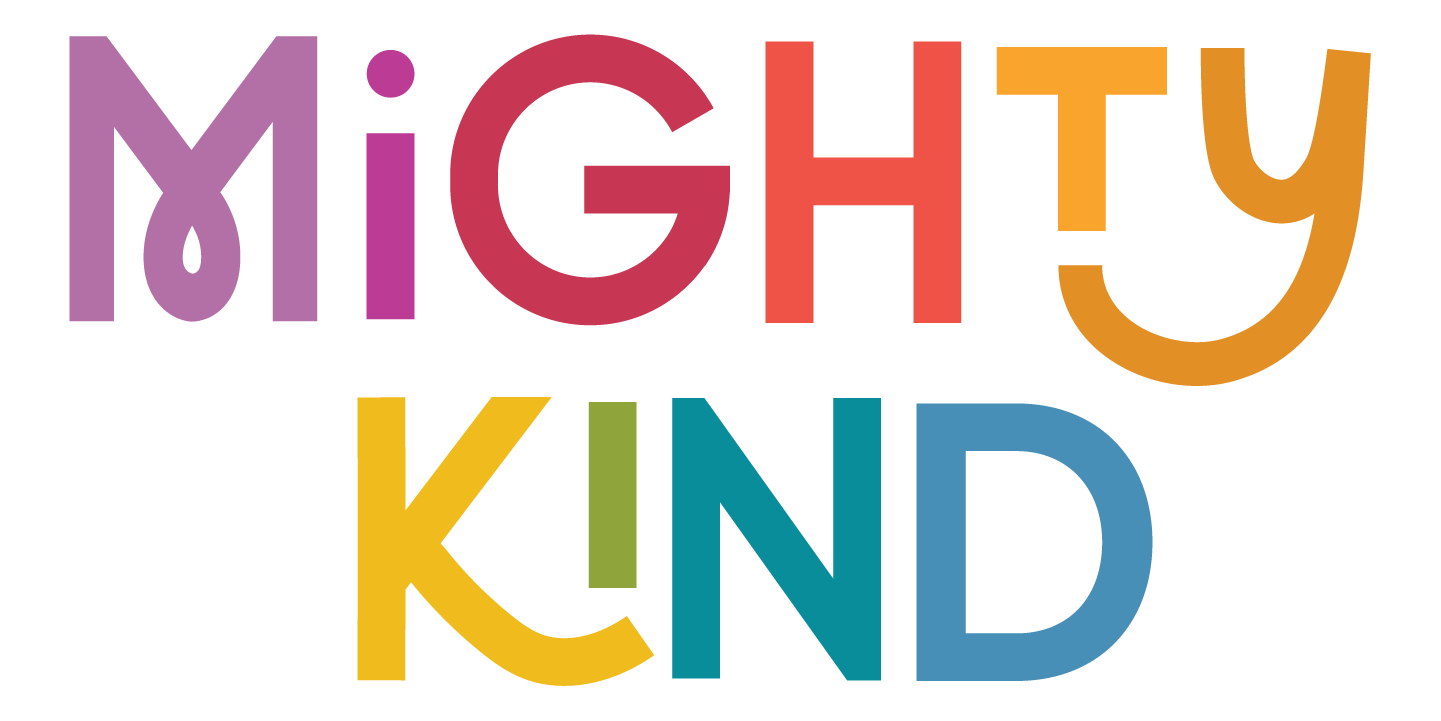GETTING STARTED WITH ANTI-BIAS AND ANTI-RACIST (ABAR) LEARNING - FAQs
WHAT DOES ANTI-BIAS MEAN AND HOW IS IT DIFFERENT FROM ANTI-RACIST LEARNING?
Anti-bias learning creates awareness and conversations around different aspects of human differences while anti-racist education specifically focuses on the race, ethnic heritage, decolonized history, and social justice. While we will certainly address anti-racism here at Mighty Kind, we will also look at other biases encompassing areas such as sexism, ableism, neurodiversity/learning differences, family structures, socioeconomic differences and more.
There are four core goals of anti-bias education:
Developing self-awareness and a positive sense of self.
Finding comfort and enjoyment in diversity- including building an accurate/mindful vocabulary and developing empathy.
Being able to recognize unfairness/injustice, be able to articulate it, and understand its impact on others.
Being empowered to speak up or otherwise take action when unfairness or injustice is identified.
HOW IS ABAR DIFFERENT FROM DEI (DEIB, JEDI, etc.)?
While the goals for DEI (diversity, equity, and inclusion— and other varying acronyms to include justice, belonging, etc.) and ABAR are aligned, the approaches and structures are different. Traditionally, DEI strategies and frameworks are used in business, education, and governments settings are are most focused on equal opportunity employment, admission, and retention. ABAR is more focused on social impact, community building, and advocacy for individuals as learners themselves or as teachers of learners.
At Mighty Kind you’ll see ABAR resources most often, however for business leaders and entrepreneurs seeing more DEI-focused strategies and frameworks, check out the Work with Nadine page for various consulting opportunities.
HOW DO I KNOW IF MY CHILDREN OR STUDENTS ARE READY FOR ANTI-BIAS LEARNING?
ABAR work is a journey, not a destination and takes everyday action as early on as possible. Therefore, it is never too early to start observing at the world around you to initiate critical thinking driven conversations around "different" not needing to be scary, bad, or otherwise negative. The best thing any adult mentor can do is lead by example in both their active learning and unlearning (i.e. modeling taking responsibility for mistakes or harm caused.)
Research as shown that (1) toddlers as young as 30 months old are already recognizing race and using it to choose their playmates, (2) by 4-5 years old are expressing racial prejudice often, and (3) that explicit conversations starting at 5 years old about interracial friendships can dramatically improve their racial attitudes and bias.
Kids are ready from a young age to start engaging in growing their empathy muscles— encourage their curiosity and learn alongside them!
(1. Katz & Kofkin, 1997, 2. Aboud, 2008, 3. Bronson & Merryman, 2009)
WHAT IS THE DIFFERENCE BETWEEN BEING “NOT RACIST” AND BEING ANTI-RACIST?
Well, the biggest difference is that there is no such thing as being “not racist”. Generally, individuals who identify as “not racist” are afraid of discomfort, are not interested in justice for others, stand by as a spectator when harm towards others unfolds, and is unaware of their own biases. Each of these attributes contributes in being a passive participant benefitting from a racist system— which, in turn, makes them part of the problem of perpetuating racism.
Anti-racist individuals work to be part of the solution, being outspoken and critical of a racist system. Unlike those who deem themselves “not racist”, anti-racist individuals embrace discomfort, seek out awareness of their own biases and combats them, fights for justice for everyone, and speaks up instead of being a spectator in instances of racist harm.
Make time to watch this TedTalk by Dr. Ibram X. Kendi.
WHAT IS INTERSECTIONALITY?
Intersectionality is the complex, cumulative way that social identities like gender, race, ethnicity, social class, religion, sexual orientation, or gender identity intertwine causing a person— especially from a marginalized groups— to experience layered and unique forms of discrimination and inequality. Ultimately, intersectionality is intended to level the playing field.
Dr. Kimberlé Williams Crenshaw developed the research on intersectionality and published in 1989. On the subject she has said, “You can’t change outcomes without understanding how they’ve come about.” and “Treating different things the same can generate as much inequality as treating the same things differently.”
Want to make ABAR learning a little more convenient?
Add Mighty Kind to your mobile device like an app!

GLOSSARY
A Selection of Common ABAR Terms
-
The practices or dominant attitudes by a society that devalues or limit the potential for people with disabilities. Ableism is the act of giving inferior value or worth to people who have different types of disabilities such as physical, emotional, intellectual, or psychiatric.
-
Accountability refers to ways individuals and communities hold themselves to their goals and actions, while acknowledging the values and groups to which they are responsible.
-
Discrimination against a person because of their age.
-
A person from a dominant social group who can support people they know from underrepresented groups by actively working against prejudice and discrimination and working towards equality and/or equity.
-
The act of taking from a cultural group without acknowledgment and/or inappropriate adoption of patterns, language, and behaviors. Also known as cultural appropriation.
-
Having prejudice against groups that are not similar to you or to have a preference for people that are similar to you.
-
An acronym for Black, Indigenous and People of Color.
-
To have prejudicial thoughts or to discriminate against a person or group based on differences in socioeconomic status and income level.
-
An acronym for diversity, equity, and inclusion.
-
The active resistance against colonial powers from indigenous culture groups.
-
An irrational fear or intolerance of people who are homosexual or have feelings of homosexuality.
-
The use of nondiscriminatory or gender non-specific language to avoid assumptions around race, culture, sexual orientation, and gender identity.
-
The acronym for “Lesbian Gay Bisexual Transgender Queer/Questioning Intersex Allies Two-Spirit and More.” The description of the movement expanded from gay and lesbian to LGBTQ and some include questioning, intersex, allies, same-gender-loving, asexual, pansexual, polyamorous, and two-spirit.
-
When a group or society exclude, ignore, or relegate a group of people to an unimportant or powerless position in society.
-
People who experience, interact, and interpret the world in unique ways. Refers to developmental disorders such as attention deficit hyperactivity (ADHD), Autism Spectrum, dyslexia, and other learning disorders.
-
Refers to people or culture of the LGBTQIA2S+ community.
-
A vision of society in which the distribution of resources is equitable and all members are physically and psychologically safe and secure. A sense of social responsibility toward and with others and the society as a whole.
-
The practice of including one or a few members of an underrepresented group in a team, group, cast, or company.
-
Transphobia (or transphobic) means fear, hatred, or discrimination towards people who identify as Transgender.
-
Represents the unearned set of advantages, privileges, or benefits given to people based solely on being white.
-
Xenophobia is prejudice or a dislike for people from other countries.
-
For a more complete glossary of terms visit the Diversity, Equity, & Inclusion Glossary from Line 25 Consulting.

“You are my neighbor and I commit myself to seeing your humanity first, then asking questions later.”
- Cami Zea, ZeaInk




